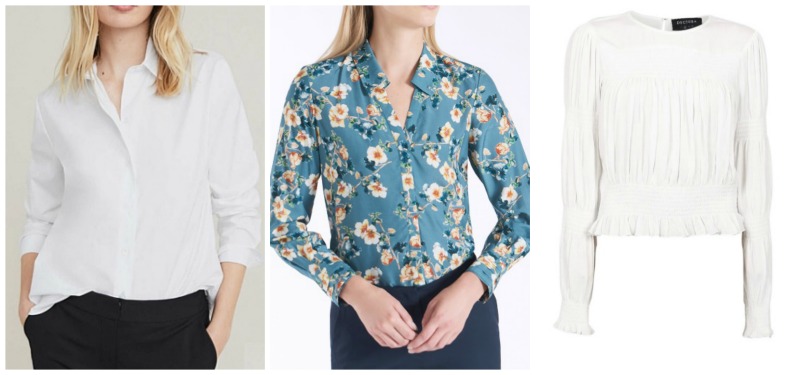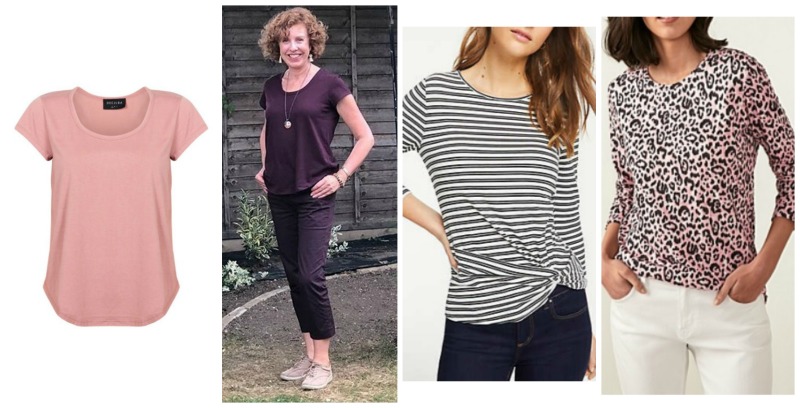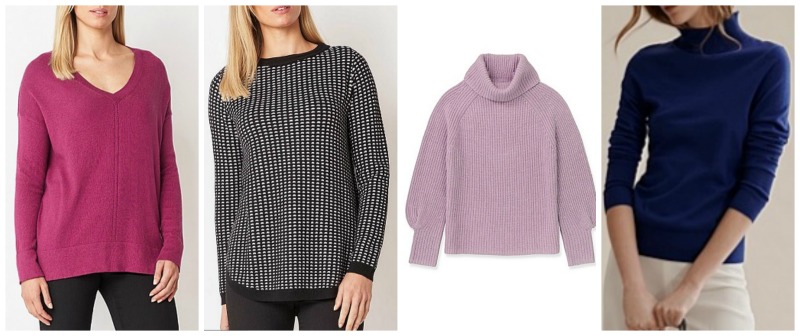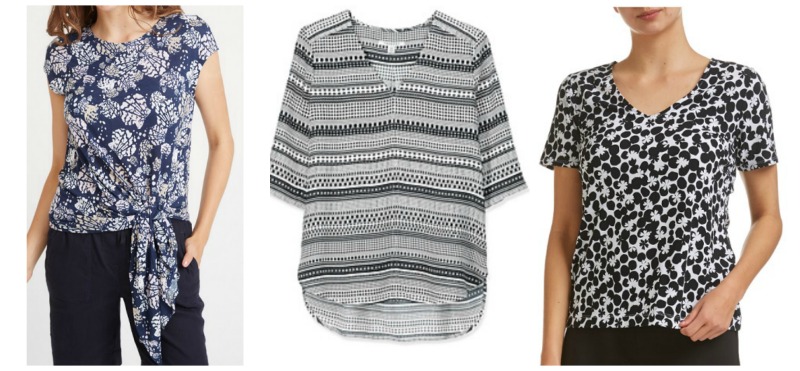Natural fibres and stylish tops
by Roselle Dobbs
(New Zealand )
I find it difficult to wear synthetic fibres on my torso - they make me sweat and I feel like I'm encased in a plastic bag. Which pretty much leaves me with cotton, wool, linen, viscose (I can get away with wearing that) or silk (which easily gets stained) for my tops. Because of this restriction, most of my tops are either T-shirts or skivvies (long-sleeved Ts).
The problem is that I now have a bit of muffin around my middle, so clingy tops - as T-shirts tend to be - are no longer so suitable. I've learned the trick of bunching or ruching around the waist, and the semi-tuck, but are there any other suggestions you can make, either about wearing T-shirts or about other sorts of tops made of natural fibres.
Jane’s answer…I’m so glad you’ve asked this question Roselle! You’re not alone with finding it difficult to wear synthetic fibres. And most of us want to disguise unwanted lumps and bumps! However, there’s certainly no need to restrict yourself to t-shirts and skivvies!
Let’s start by looking at the different types of fabrics
Types of fabrics
Natural fabrics are made from natural fibers produced from plants and animals. Making these fabrics involves no, or minimal, chemical changes. These fabrics include: cotton, linen, hemp, ramie, wool (eg merino, cashmere, mohair, angora) and silk.
Semi-synthetic fabrics are made from natural cellulose (from wood or plants) that is chemically altered during the manufacturing process. These include: rayon (also called viscose), Lyocell (a form of rayon, also called Tencel), bamboo and modal.
Synthetic fabrics are made entirely from synthetic materials (often from petrochemicals). They include: polyester, nylon, acrylic, spandex, lycra, and elastane..
Blended fabrics are created from a mix of fibres. They have been invented to improve upon qualities of natural and synthetic fabrics. The improvements could include price, performance (such as absorption, breathability, fewer wrinkles, ease of care) and how it feels (also called the fabric ‘hand’).
For more about blended fabrics see this article by Ann Reinten Fabric Matters – Blended Fabrics.
The best fabric types for sensitive skin, and if you feel the heat
If you have sensitive skin, and/or feel the heat, natural fabrics and semi-synthetic fabrics will work best for you. Although with sensitive skin you may find that many, or perhaps all types of wool will irritate your skin.
You may also find that blended fabrics will work, especially blended fabrics that include a high percentage of natural fibres. I’m noticing many more blended fabric garments in recent years.
Some people can tolerate synthetic fabrics, like polyester, in cooler weather, or in skimpier garments, such as camisoles (as a layering garment). However, it sounds as if fully synthetics don’t work for you at all.
Stores more likely to have garments in natural, semi-synthetic, and natural-rich blends
Natural fabrics are often associated with designer and higher-end stores. However, here in Australia I’ve found some mid-priced stores/brands that are more likely to have clothes in natural and high percentage of natural-blends (it looks as if most of the ones below have stores in New Zealand as well). They are:
- Blue Illusion
- Country Road
- Decjuba -- some linen and many natural and semi-natural blends
- David Lawrence
- Sportscraft
- Trenery
- Witchery –- especially their Limited Edition range
Styles of tops to look for
Really any that flatter your shape, colouring and style preference! Obviously, you’ll check the labels. However, in particular look for:
- Shirts and blouses -- these are widely available at the moment, in a good range of styles, fabrics, colours and patterns. Here are just a few good examples:

Images (clockwise from left): Witchery – 97% cotton, 3% elastane; David Lawrence – 65% viscose, 35% silk; Decjuba – 100% viscose - Non-clingy tees and other jersey-knit tops -- again there’s a good range of these available.

Images (clockwise from left): Decjuba Carrie t-shirt – 65% cotton, 35% polyester, available in 7 colours; Me in a Decjuba Carrie t-shirt colour from last year; Ann Taylor twisted hem long sleeve t-shirt – 53% rayon, 45% polyester, 2% spandex, so probably wouldn’t work for you, but I wanted to show the style; Trenery – linen cotton blend - Sweaters

Images (clockwise from left): Blue Illusion – 95% cotton, 5% cashmere; Blue Illusion – 100% wool; Country Road – 80% Merino wool, 20% silk; Country Road – 95% cashmere, 5% Merino - Other tops

Images (clockwise from left): Sportscraft – 50% modal, 44% cotton, 6% elastane; Trenery – 100% modal; Sportscraft – 91% modal, 9% silk
Also look for tops with interesting hemlines and shaping such as: shaped at the sides; high-low (higher at the front, lower at the back); asymmetric; concave; twisted; ruching; and ties. Shorter tunic styles may also work for you.
And continue to use the styling techniques you mentioned (draping, ruching and semi-tucking), when needed. For any tops with a large volume of fabric, such as blouses, try tying a small knot at the hemline to one side – this will create shape and possibly ruching too.
Use your clingy t-shirts as layering pieces under sleeveless tops and dresses.
If you found this useful…
You’ll find more answers to readers’ style questions here.
Comments for Natural fibres and stylish tops
|
||
|
||
Like This Page?
"Your style makeover may require a few tweaks or a total re-think. Using a mix of science and art I show you how to discover your style and look great every day.
Hi, I'm Jane Liddelow, the Personal Image Consultant and Stylist responsible for this site. Find out more about me here."
